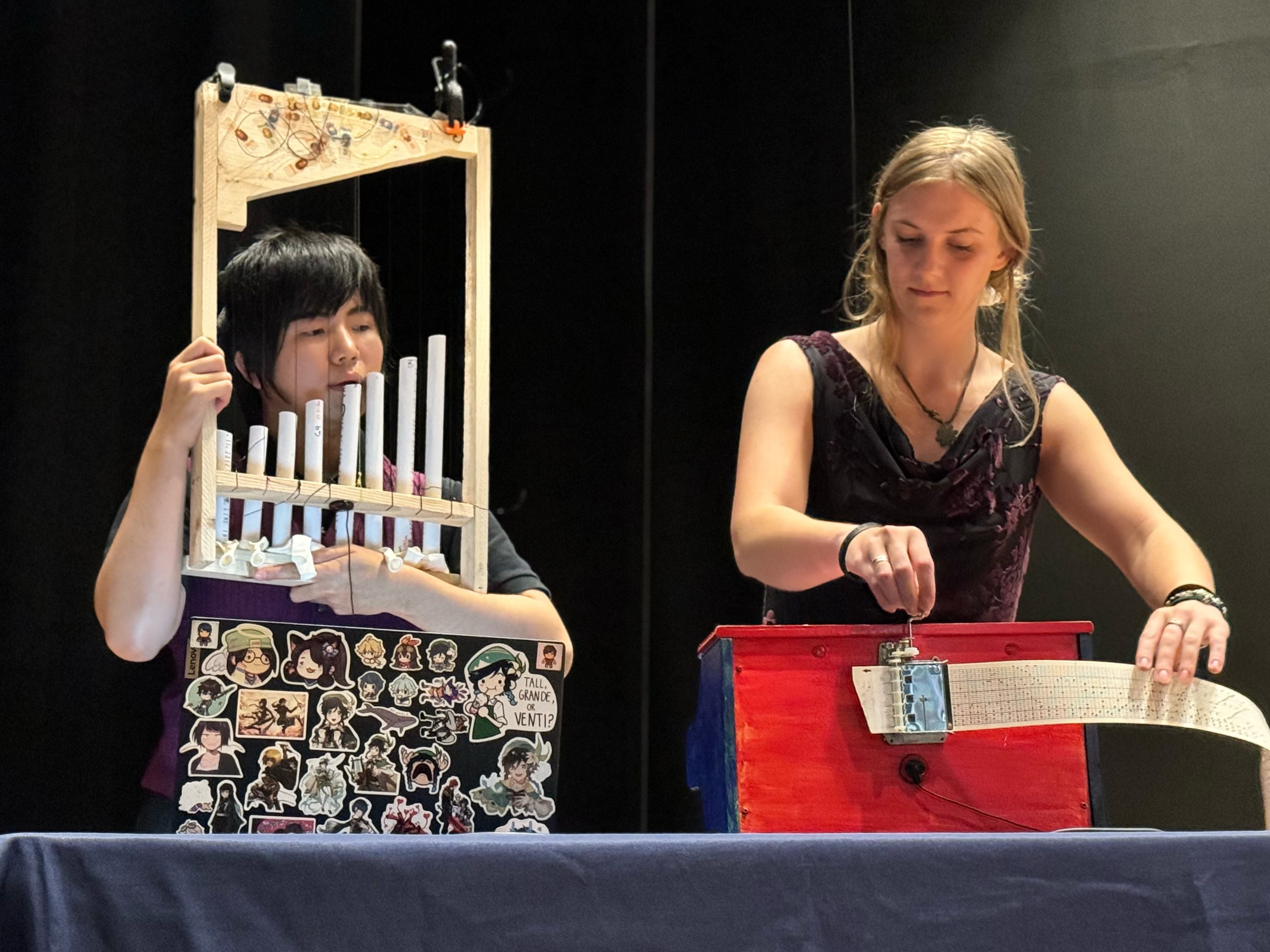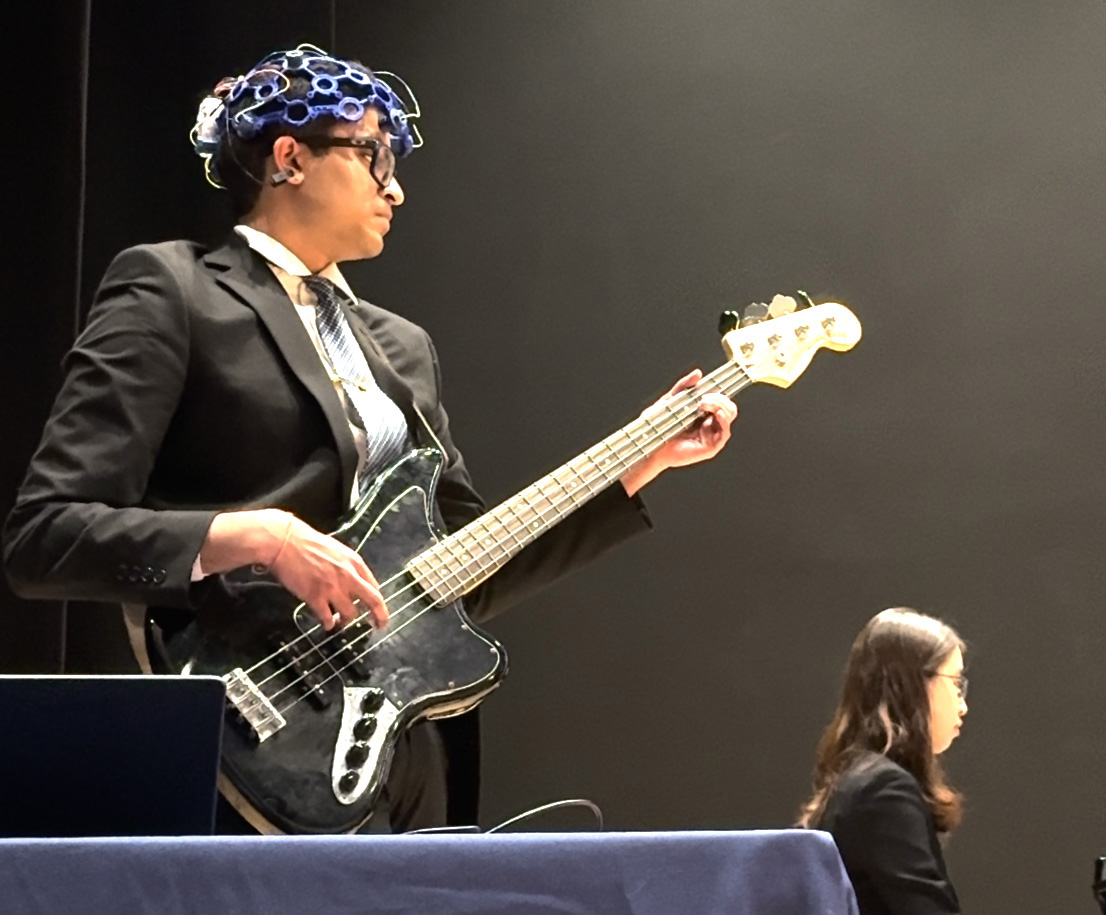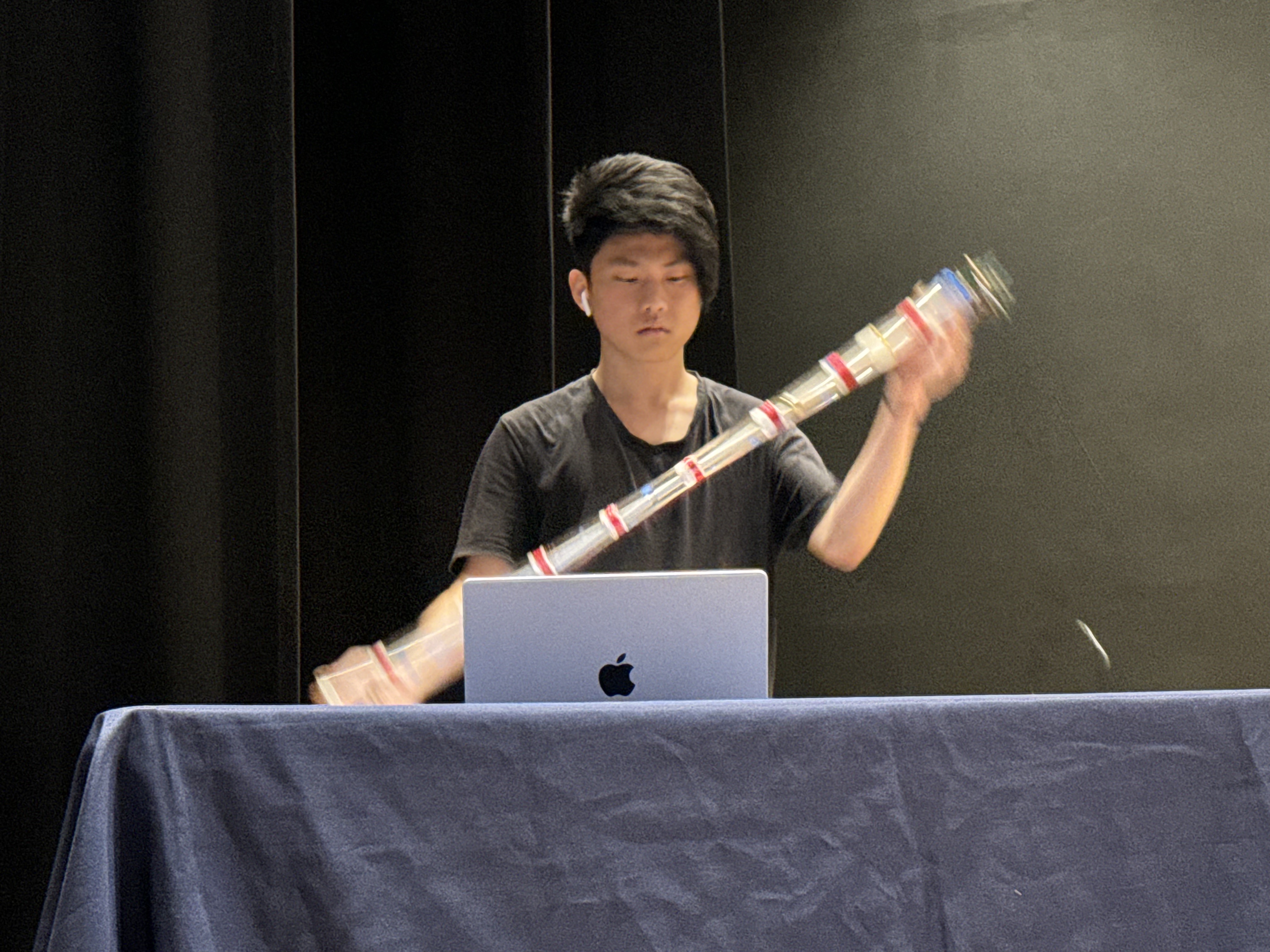
May 23, 2024 - The Creophone, Wube Tubes and Saxatars were just some of the cool creations by engineering students who had to meet a challenge: invent a new musical instrument for a UCI contest. Their inspirations included harnessing brainwaves, capturing the wind and upcycling instrument parts. That was the ingenious imaginative spirit on display at the first Engineering-Symphonic Orchestra New Instrument Competition (E-SONIC) on May 20.
“This new instrument competition is all about having the courage to go after new and wild ideas,” says Samueli School of Engineering Dean Magnus Egerstedt who together with Pacific Symphony President John Forsythe conceived of the contest over lunch. “I want our students to have creative confidence – the confidence to embrace a new problem or stand in front of an empty scoresheet and imagine something that didn’t exist before.”
The Pacific Symphony welcomes these inventions as there hasn't been a new instrument added to the orchestra in a century. “The idea that there could be a new color or texture introduced to orchestral music through an invented instrument would be an amazing addition to our ability to create beautiful art,” said Forsythe. Winners not only received a cash prize ($1,000 and $500) but will also have the chance to work with the Pacific Symphony to compose and perform a piece around their instrument.
Six teams of engineering students spent months designing and creating their musical inventions. The rules were simple. The instruments had to meet three criteria: it had to be new, playable with notes and have some physical manifestation. The teams all had a faculty advisor, also a hybrid engineer-musician, and received one academic credit for the project.
At E-SONIC, the teams explained the technology behind their designs and performed music with their instruments. The jury included experts from the Pacific Symphony, Claire Trevor School of the Arts and the Samueli School of Engineering.

The six entries included three synthesizers. The Creophone, worn over the head, is an EEG-controlled synthesizer that detects specific brainwave thresholds to evoke enchanting chords. Pulstar is an electronic synthesizer while the May Organ is an amplified electromechanical instrument that fuses concepts from the Hammon organ and digital wavetable synthesizers.
The Wube Tubes is a fusion of recycled wind and string instruments that’s played by blowing into the tubes while plucking the strings. The Saxatar, the winner of the People’s Choice Award, harnesses the wind through the science of fluids and vibrations.
Taesung Hwang, a senior who majors in both computer science and engineering and music, created the jury’s top choice - the Inductus - which he affectionately calls a “cool big stick.” The three-foot long rod exudes an extraordinary array of ethereal sounds as a magnet slides inside, passing through coils of wire that send electronic impulses to a microcontroller that transforms the signals into music.
“There’s definitely a deep connection between the arts and STEM fields,” Hwang says, “We can use computer algorithms to generate melodies, harmonies and rhythms. It’s fun putting the two together.”
In addition to the debut of these novel instruments, the evening was graced with performances from a band comprised of Dean Egerstedt and four engineering faculty musicians. They all rotated instruments as they sung engineering-themed tunes like “Another Brick in the Wall,” “Rocket Man” and “The Scientist.” The band included Herdaline Ardoña, Pim Oomen, Maxim Shcherbakov and Ali Moraz, who were also advisors to the student teams.
As for the student inventions, the Pacific Symphony president was impressed. “I was amazed at the synthesis between music, design and math and everything that came together,” Forythe said. “It was beautiful.”

“I loved hearing the technical aspects during the presentation of the instruments,” said Claire Trevor School of the Arts Dean Tiffany Ana López. “The exploration and discovery - it was magical.”
The audience delighted at the unforgettable fusion of engineering, art and innovation on display that evening at Winifred Smith Hall at the Claire Trevor School of the Arts. And it doesn’t stop there. E-SONIC will be an annual contest and project that UCI students can participate in for academic credit. “This is only the beginning,” said Egerstedt, “Next year will be bigger, shinier, with even more instruments.”
- Natalie Tso


